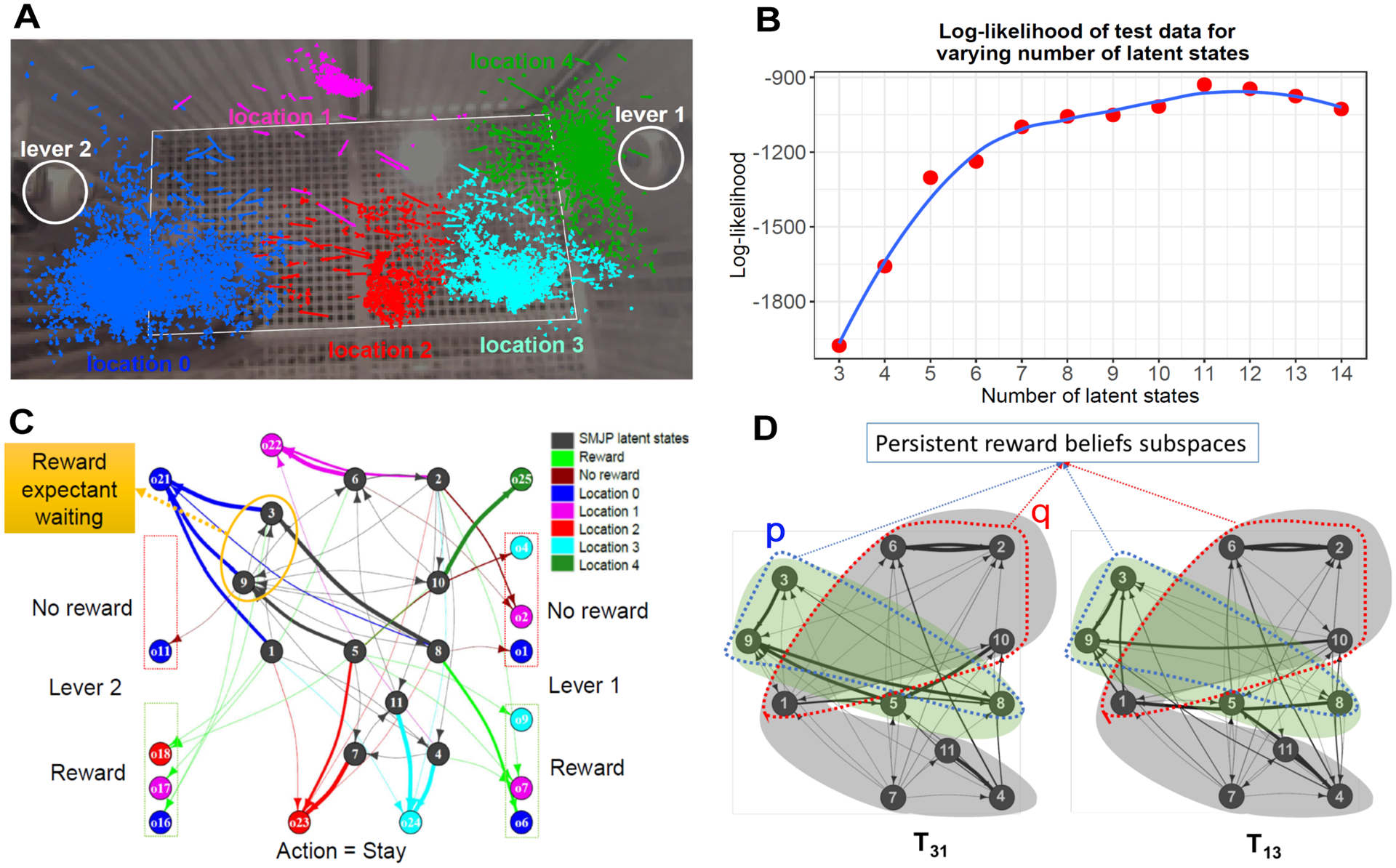Figure 7:

Analyzing behavioral data from a freely moving monkey using the SMJP. (a) Overhead video (background image) tracked the locations and normalized velocities (vectors) of the monkey. These data were then clustered by the k-means algorithm. (b) We get an estimate of the required number of latent states by observing log-likelihood on held out data. (c) SMJP model for observed monkey behavioral data for the action stay. Highlighted reward expectant waiting states illustrate that the latent states as regressors for the beliefs dynamics are useful in understanding monkey’s behavior. (d) Subspaces p and q (blue and red dotted), within the subgraphs (green and gray highlighted) for the joint operators T31 and T13 reveal persistent reward belief states.
